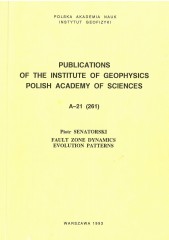- A - Physics of the Earth's Interior
- B - Seismology
-
C - Geomagnetism
C-119, C-118, C-117, C-116, C-115, C-114, C-113, C-112, C-111, C-110, C-109, C-108, C-107, C-106, C-105, C-104, C-103, C-102, C-101, C-100, C-99, C-98, C-97, C-96, C-95, C-94, C-93, C-92, C-91, C-90, C-89, C-88, C-87, C-86, C-85, C-84, C-83, C-82, C-81, C-80, C-79, C-78, C-77, C-76, C-75, C-74, C-73, C-72, C-71, C-70, C-69, C-68, C-67, C-66, C-65, C-64, C-63, C-62, C-61, C-60, C-59, C-58, C-57, C-56, C-55, C-54, C-53, C-52, C-51, C-50, C-49, C-48, C-47, C-46, C-45, C-44, C-43, C-42, C-41, C-40, C-39, C-38, C-37, C-36, C-35, C-33, C-32, C-31, C-30, C-29, C-28, C-27, C-26, C-25, C-24, C-23, C-22, C-21, C-20, C-19, C-18, C-17, C-16, C-15, C-14, C-13, C-12, C-11, C-10, C-9, C-8, C-7, C-6, C-5, C-4, C-3, C-2, C-1
-
D - Physics of the Atmosphere
D-79, D-78, D-77, D-76, D-75, D-74, D-73, D-72, D-71, D-70, D-69, D-68, D-67, D-66, D-65, D-64, D-63, D-62, D-61, D-60, D-59, D-58, D-57, D-56, D-55, D-54, D-53, D-52, D-51, D-50, D-49, D-48, D-47, D-46, D-44, D-45, D-43, D-42, D-41, D-40, D-39, D-38, D-37, D-35, D-34, D-33, D-32, D-31, D-30, D-28, D-27, D-26, D-25, D-24, D-23, D-22, D-21, D-20, D-19, D-18, D-17, D-16, D-15, D-14, D-13, D-12, D-11, D-10, D-9, D-8, D-7, D-6, D-5, D-4, D-3, D-2, D-1
- E - Hydrology
- P - Polar Research
- M - Miscellanea
-
Online First
Fault Zone Dynamics Evolution Patterns
Volume: 261
Series: A-21
A model of fault zone dynamics is proposed. Slips along complex fault system, long-range interactions, any distribution of barriers and asperities (modelled by cohesive forces with breakdown strengths and non-zero breakdown slips), a velocity-dependent friction, healing and reactivation of cohesive forces, a circular causality between earthquakes and tectonic stresses are taken into account.
CONTENTS
Abstract, 3
1. Introduction and synopsis, 5
1.1 Introduction, 5
1.2 Synopsis, 16
2. Dynamical systems, 18
2.1 Evolution equations, 18
2.2 Visualization, 19
2.3 Attractors - asymptotic behaviour, 20
2.4 Examples, 21
2.5 Types of a steady state behaviour, 22
2.6 Attractors and dissipative systems, 23
2.7 Informational aspect of dynamics, 24
2.8 Chaos, ...28
2.9 Lyapunov exponents, ...28
2.10 Bifurcations, ...31
3. Crack nucleation and propagation, ...32
3.1 Models of faulting, ...32
3.2 Griffith´s theory, ...33
3.3 Slip failure phenomenology, ...34
3.4 Model of faulting, ...35
4. Earthquake cycles, ...44
4.1 Open boundary conditions, ...44
4.2 Evolution equations, ...46
4.3 Remarks, ...47
5. Introduction, ...48
6. Non-dimensional variables, ...49
7. Results, ...50
7.1 Example 1: Equilibrium slip distribution, ...50
7.2 Example 2: Dislocation pile-up formation, ...50
7.3 Example 3: Slip failure propagation, ...51
7.4 Example 4: Barrier-asperity effect, ...51
7.5 Example 5: Crack nucleation, ...53
7.6 Example 6: Fault interaction, ...53
7.7 Example 7: Distant faults - periodic evolution, ...55
7.8 Example 8: Distant fault - chaotic evolution, ...55
7.9 Example 9: Close faults - periodic evolution, ...56
7.10 Example 10: Close faults - chaotic evolution, ...57
8. Discussion, ...57
9. Conclusion, ...58
Appendix A: Energy change functional, ...61
Appendix B: Theory of dislocations, ...64
Appendix C: Interaction coefficients, ...72
Appendix D: Adiabatic approximation, ...74
References, ...75
Streszczenie, ...80


